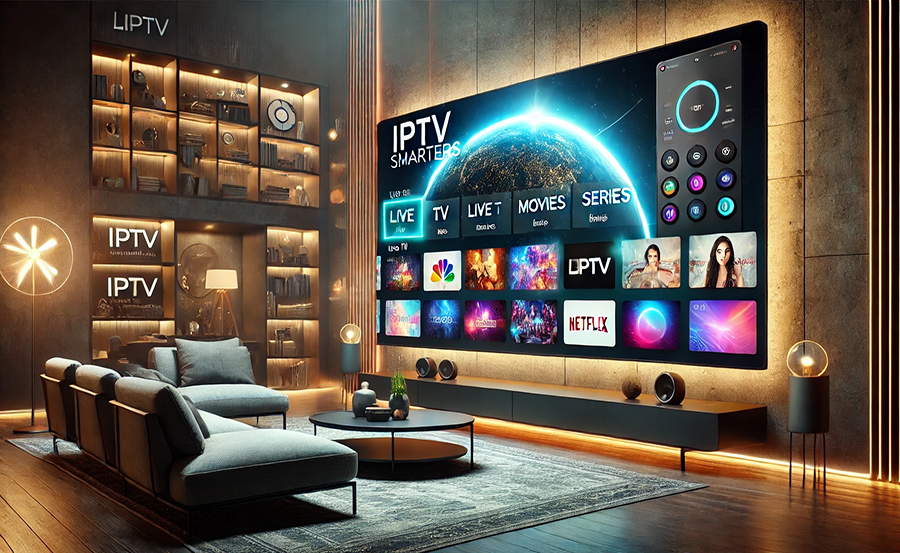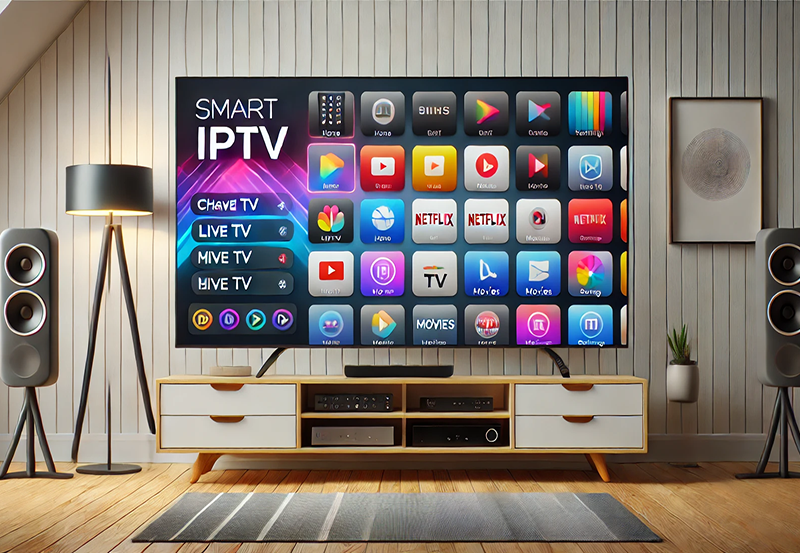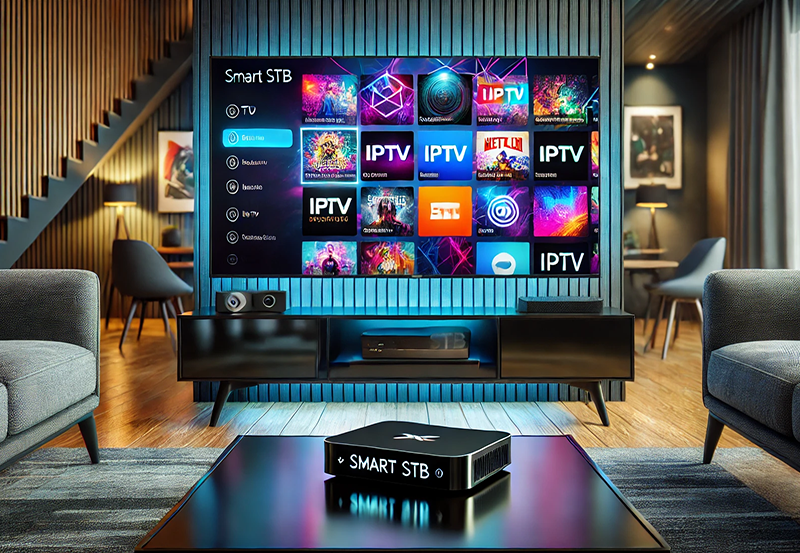The Dawn of OTT: A New Era in Entertainment
OTT (Over-The-Top) platforms have transformed the entertainment landscape in unprecedented ways. These platforms allow users to stream content directly over the internet without the need for traditional broadcast, cable, or satellite pay-TV services. With the rise of Netflix, Amazon Prime, and Disney+, consumers now have access to a treasure trove of shows, movies, and exclusive content available at their fingertips. This shift has not only altered viewing habits but also disrupted the traditional media and entertainment industries. Buy 1 Year IPTV Subscription and Enjoy Unlimited Content
The convenience and flexibility offered by OTT services are unparalleled. Unlike traditional TV models that require viewers to tune in at specific times, OTT allows audiences to watch what they want, when they want. This fundamental change in consumption has paved the way for entirely new viewing experiences, setting a precedent for future entertainment consumption.
Understanding IPTV: A Stepping Stone to OTT
IPTV, or Internet Protocol Television, plays a crucial role in the evolution towards OTT services. IPTV refers to streaming television content over the internet protocol networks, which is quite different from the conventional method of broadcasting via satellite or cable networks. While OTT services operate independently of traditional network operators, IPTV usually involves some network providers in the process.
For those venturing into the world of digital streaming, IPTV for beginners might seem complex. However, understanding its mechanics can enhance your viewing pleasure significantly. By using a broadband connection, IPTV allows for the delivery of live or on-demand television shows and movies, making it an accessible option for many who seek a broader range of channels and content.
- IPTV services offer more control over what you watch and when you watch it.
- They provide access to a wider array of channels, often including international content.
- The service can be accessed across various devices, such as computers, smart TVs, and mobile gadgets.
The Growth of OTT Platforms
The expansion of OTT platforms can largely be attributed to the increasing demand for content diversity and quality. These services provide an array of genres, languages, and formats, catering to the divided interests of a global audience. With original content becoming a significant part of their strategies, OTT platforms are redefining the concept of content ownership and distribution.
Another aspect bolstering the growth of these services is the globalization of content. OTT platforms often acquire the rights to internationally acclaimed films and series, bringing diverse cultures to living rooms worldwide. This has encouraged a cross-cultural appreciation that was previously unattainable through traditional media means.
User Customization and the Rise of Personalized Content
One of the standout data-driven benefits of OTT services is personalized content recommendations. Using sophisticated algorithms, these platforms evaluate a user’s viewing habits to suggest content that aligns with their preferences. This feature not only enhances user experience but also keeps viewers engaged for longer periods.
Such personalization extends beyond recommendations—users can create profiles, manage watchlists, and track viewing history seamlessly. This adds a layer of convenience that traditional TV struggles to match, paving the way for a more individualized and satisfying consumption model.
The Technical Backbone of OTT: Internet Infrastructure
While content is king, the role of strong internet infrastructure cannot be overstated in the success of OTT platforms. The seamless streaming experience we enjoy today is greatly dependent on the advancements in internet speed and connectivity. Broadband technology, fiber-optic advancements, and widespread Wi-Fi availability have made high-quality streaming more accessible.
Internet Service Providers (ISPs) are crucial allies in this ecosystem, collaborating with OTT services to ensure bandwidth is sufficient to handle the surge in streaming demands. This symbiotic relationship is integral to maintaining the quality and reliability that audiences now expect as standard.
Challenges Faced by OTT Providers
Despite the rosy picture, OTT platforms do face significant challenges. Foremost among these is the issue of infrastructure in less-developed regions. As much as connectivity has expanded, there are still barriers in emerging markets where internet penetration is limited.
Moreover, the rise of numerous OTT platforms has led to content saturation, forcing consumers to choose among multiple subscriptions, which can become costly. Additionally, there are ongoing debates regarding net neutrality, as potential changes in laws and regulations can impact how freely content can be accessed.
Monetization Models: How OTT Providers Generate Revenue
Monetizing streaming content is a key focus for OTT platforms. These providers typically adopt one or more revenue models to ensure profitability. The subscription-based model is the most prevalent, where users pay a regular fee for unlimited access to the platform’s content library. Examples include Netflix and Hulu, which extensively employ this model to generate steady income.
Alternatively, advertising-based models are also popular, particularly for platforms offering free content access. Such services monetize through ad placements, strategically incorporating them into user experience without imposing too much disruption. There are also hybrid models where providers utilize both subscription and ad revenue, offering a tiered service that appeals to wider audiences.
- Subscription Model: Regular payment plan for accessing content.
- Advertising Model: Free access supported by ad revenue.
- Hybrid Model: Combination of ads and subscriptions for diverse offerings.
The Future of OTT: Looking Ahead
As technology continues to advance, so too will the capabilities and offerings of OTT platforms. We can expect a deeper integration of artificial intelligence and machine learning, not only enhancing personalization but also refining the quality of streamed content. As VR and AR technologies improve, the potential for interactive and immersive experiences opens up new horizons for these platforms.
Moreover, collaborations between media giants and OTT players could lead to exclusive content deals, bolstering user acquisition and retention. The evolving landscape of entertainment media is leading us toward a more integrated experience, one that dovetails various forms of digital consumption in compelling new ways.
Emerging Markets and OTT Growth
The untapped potential in emerging markets presents a lucrative opportunity for OTT providers. As internet accessibility improves across developing regions, a vast new audience becoming available is anticipated. This development will necessitate tailored content strategies that respect cultural contexts and language differences.
OTT platforms venturing into new markets must also consider pricing models that reflect local economies, ensuring their services remain attractive and competitive. By focusing on inclusivity and accessibility, providers can establish a foothold in previously underserved areas, driving further global growth and innovation.
FAQ Section

What is OTT, and how does it work?
OTT (Over-The-Top) refers to streaming media services provided directly to viewers over the Internet, bypassing traditional broadcast, cable, or satellite television platforms. Users subscribe to these services and stream content via their internet connections on various devices such as smartphones, tablets, smart TVs, or computers.
How is IPTV different from OTT?
IPTV and OTT both deliver content via the internet, but there are distinctions. IPTV typically involves a service provider and offers live TV, on-demand, and catch-up TV through a set-top box or other app-based solutions. On the other hand, OTT is directly accessible by users over the internet without the need to go through a service provider, focusing on on-demand content.
Can I use OTT services without a traditional TV?
Yes, OTT services can be accessed without a traditional television set. They are compatible with a variety of devices, including smartphones, tablets, laptops, and desktop computers. Smart TVs, streaming devices, and gaming consoles can also be used to access OTT platforms, offering the flexibility to watch content on any screen.
Are OTT platforms more cost-effective than cable?
OTT platforms can often be more cost-effective than traditional cable or satellite services, depending on the number of subscriptions and the type of content desired. Many users find value in the flexibility and specific content OTT services provide, allowing them to pay only for the content they want to watch.
Will OTT services replace traditional TV completely?
While OTT services are gaining significant traction and transforming media consumption habits, traditional TV still holds relevance in some regions, especially where live events and specific broadcasting regulations are concerned. A complete replacement is unlikely in the near term, but OTT is increasingly complementing traditional TV services.
How can someone new to streaming get started with OTT?
Beginners can start with OTT by selecting a few well-reputed platforms based on the content they enjoy. Many services offer free trials that allow users to experience the platform before committing to a subscription. It’s important to have a stable internet connection and compatible devices, such as a smart TV or a reliable streaming device.
Are there risks associated with using OTT platforms?
While using OTT platforms is generally safe, users should be aware of potential data privacy and security risks. It’s advisable to read the terms of service and privacy policies, and use platforms that have a robust reputation for safeguarding user data. Keeping software and apps updated also helps protect against vulnerabilities.
Elevate Your Viewing Experience: Top Reasons to Choose IPTV Over Cable





